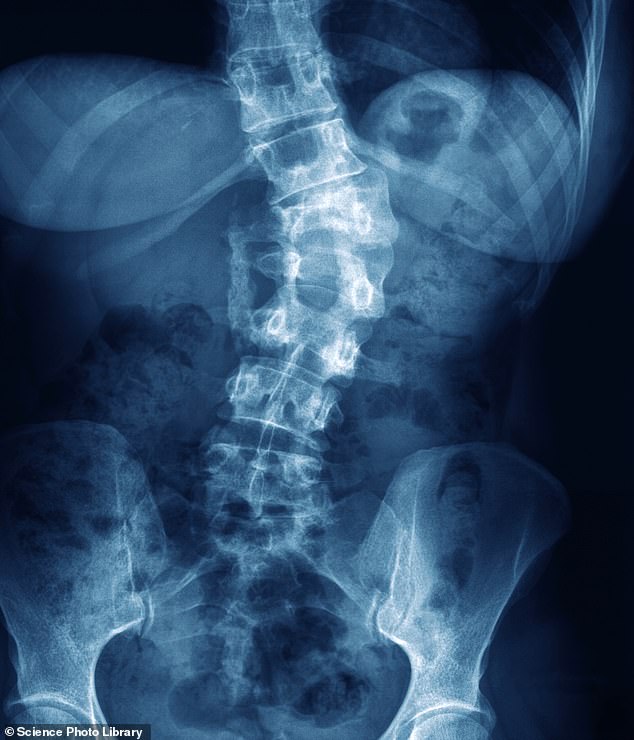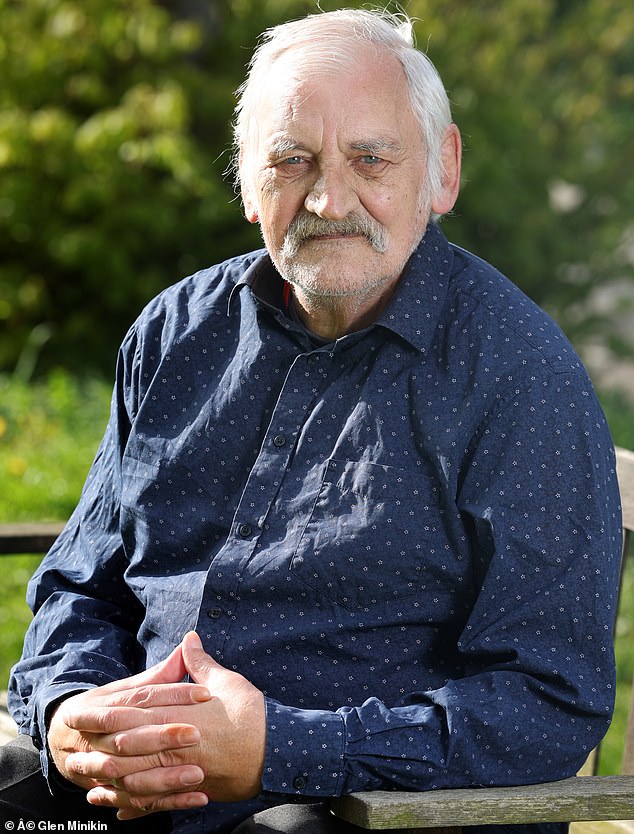Table of Contents
It took ten agonizing spinal fractures in a year before NHS doctors finally diagnosed Stephen Robinson with osteoporosis, a bone-thinning disease.
The 71-year-old father of three says the cause of his increasing pain was discovered only after he suffered another back fracture, caused by a sneeze.
However, the Yorkshire forklift driver was forced to pay £3,500 for a private scan to confirm the diagnosis.
Stephen believes doctors did not suspect osteoporosis because the majority of sufferers are women. Instead, he was told that her immobility was due to aging. He has now written to Prime Minister Rishi Sunak, who is also his MP, urging him to ensure all hospitals have specialist clinics, known as fracture liaison services, to detect early signs of osteoporosis.
Stephen Robinson was forced to pay £3,500 for a private scan to confirm his osteoporosis diagnosis.
The clinics offer disease evaluations to people over 50 who come to the ER with a broken bone. They will have a DEXA scan (an x-ray that measures bone density) and may then be offered treatments or advice to improve their bone health through diet, exercise and supplements.
But the services are only available in around half of England’s NHS Trusts. The Mail on Sunday is campaigning for the clinics to be rolled out across the UK.
Previously, Stephen was a passionate athlete who participated in the Great North Run five times and played football into his 50s.
However, since suffering these fractures in 2017, he has been unable to walk more than a few hundred meters. He says he saw his GP ten times before he was diagnosed, but was never sent for a scan.
“The first fracture occurred when I bent over to pick up a heavy bag at work,” he says. ‘I felt a horrendous, sharp pain in my back. It was so bad that I felt dizzy and nauseous. I had to take the rest of the day off.’
Stephen’s GP said there was nothing to worry about. “He told me to rest for a couple of days and then I would be fine to go back to work,” he says. Three days after returning to work, I felt another sharp pain in my back: the second fracture. I kept going to the GP, but they told me it was just the wear and tear that people my age experience.
“I asked him if it was worth having a scan, but he said it was a muscle problem, so there was no point. Osteoporosis was never mentioned. Perhaps this was because the majority of patients are women, so doctors didn’t think I was at risk.
Only one in five people with osteoporosis are men. Women are at greater risk as estrogen levels, which help maintain bone health, decline during menopause.
Stephen was left unable to dress, cook or lead an independent life. He depended on his sister-in-law Barbara to take care of him. He also had to leave work.
Almost a year later, Stephen was making a cup of tea when he sneezed. He felt a sharp pain in his back and fell to the ground. It was his tenth fracture.
“At that moment I knew I had to take care of it,” Stephen says. ‘So I paid to have a scan done privately. I spent almost £3,500 to get my diagnosis.’
Scans revealed his extensive spinal fractures and he was told he had severe osteoporosis. He now receives daily injections of medications that help strengthen his bones.

Stephen believes doctors did not suspect osteoporosis because the majority of sufferers are women.
His pain has greatly decreased and he can move around without a cane, but he will probably never return to sports or full employment.
“My osteoporosis was repeatedly ignored,” says Stephen. ‘If there had been a local fracture co-ordination service, perhaps my GP would have referred me there after my first or second visit. He could have saved me from multiple fractures and I may still be working.
‘I feel like the NHS has let me down. I don’t want the same thing to happen to others, which is why I am calling on the Prime Minister to fund fracture liaison services in all hospitals.’
Research from the Royal Osteoporosis Society published last week revealed that up to 2.6 million people in the UK have broken bones in their backs and suffer severe pain, without knowing the cause. This is due to the postcode lottery over fracture link services.
Spinal fractures usually occur without a traumatic event such as a fall. As a result, muscle wasting or pain is considered. According to the Royal Osteoporosis Society, around 70 per cent of spinal fractures never receive medical attention.
Last week, the Welsh Government announced it would invest more than £1 million in fracture linkage services, ensuring every patient in Wales has access to a clinic.
Scotland and Northern Ireland also ensure equal access to a fracture liaison service no matter where they live, meaning England will be the only region of the UK where not all patients at risk of osteoporosis are screened.
But Health Secretary Victoria Atkins backed the Mail on Sunday’s campaign for a universal fracture liaison service.
A Department of Health and Social Care spokesperson said: ‘Across England, our major diseases strategy will explore ways to improve outcomes for patients with musculoskeletal conditions.
“Through our women’s health strategy we aim to improve the experiences of women with diseases that disproportionately affect them, such as osteoporosis.”
This works… Snapfeast

Take a photo of the food in your refrigerator and this mobile phone app will tell you what you can cook.
Free – available for both iPhone and Android.

